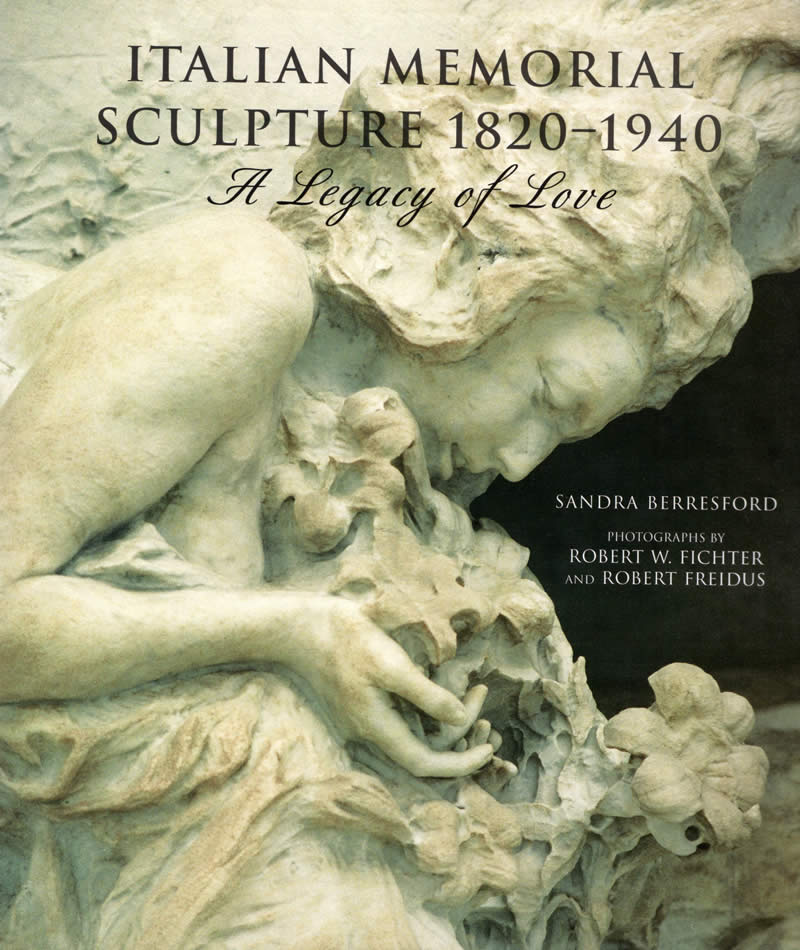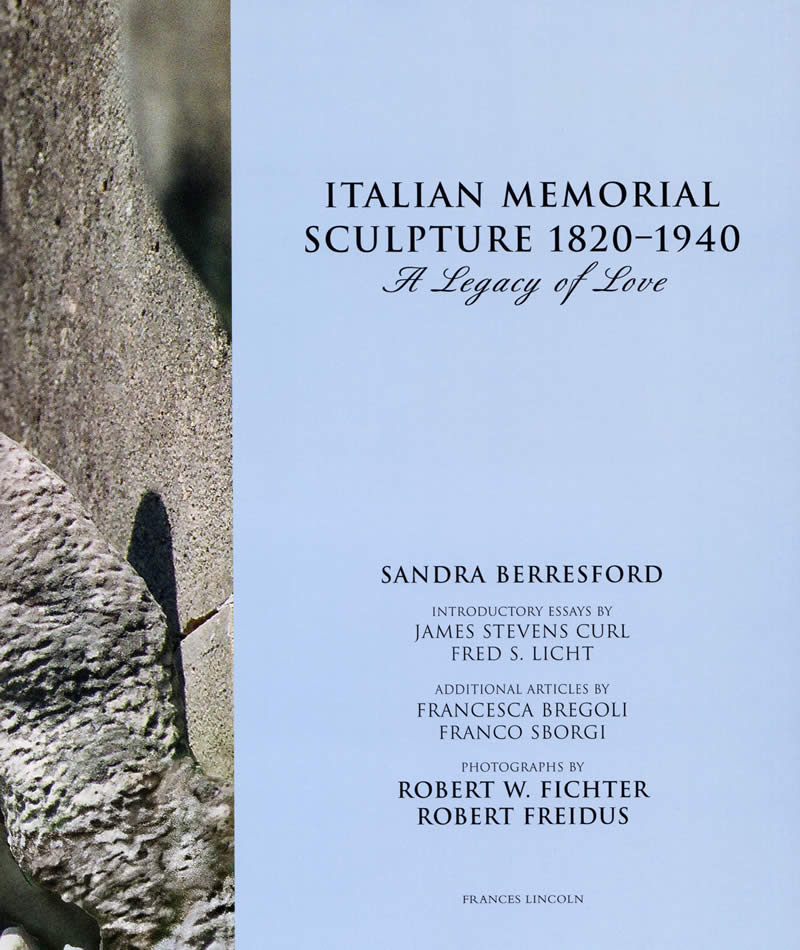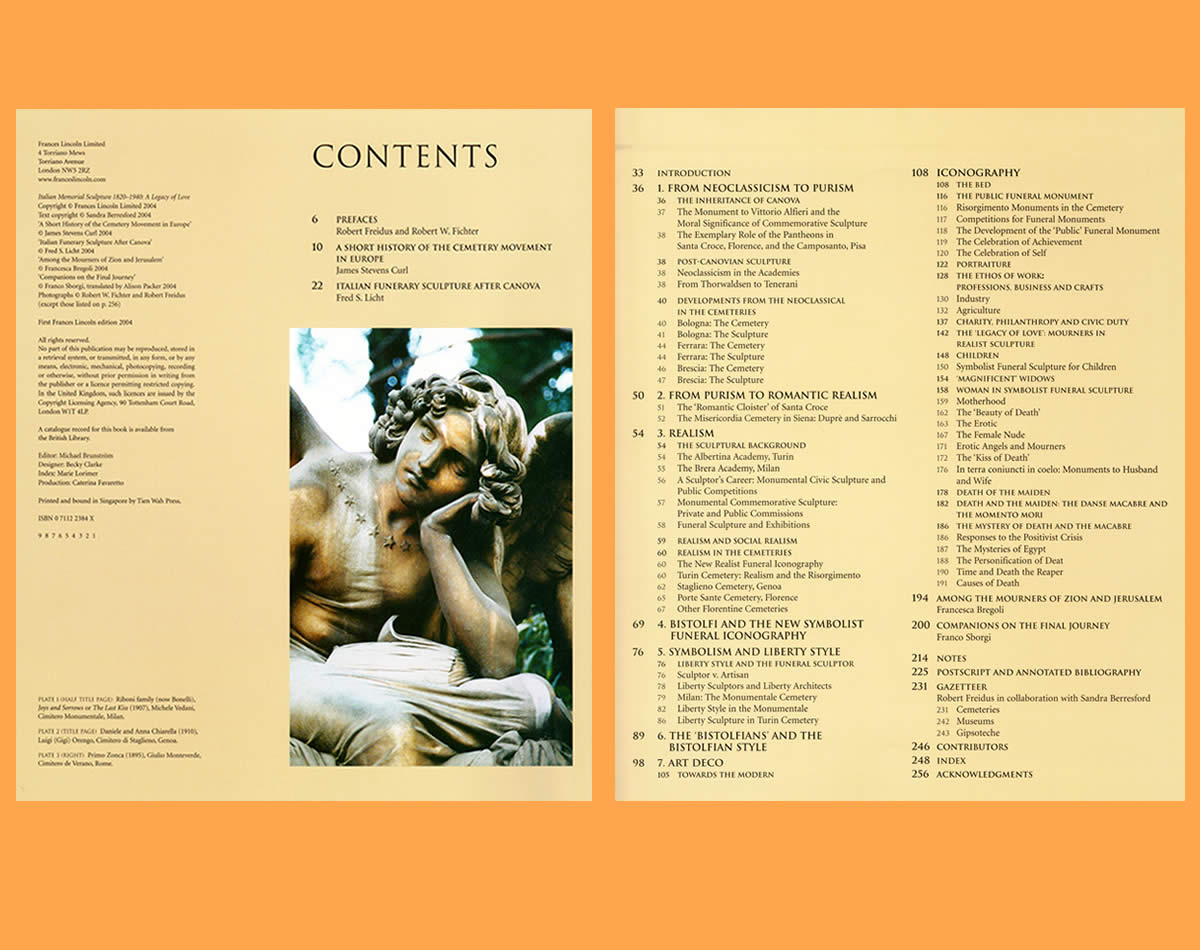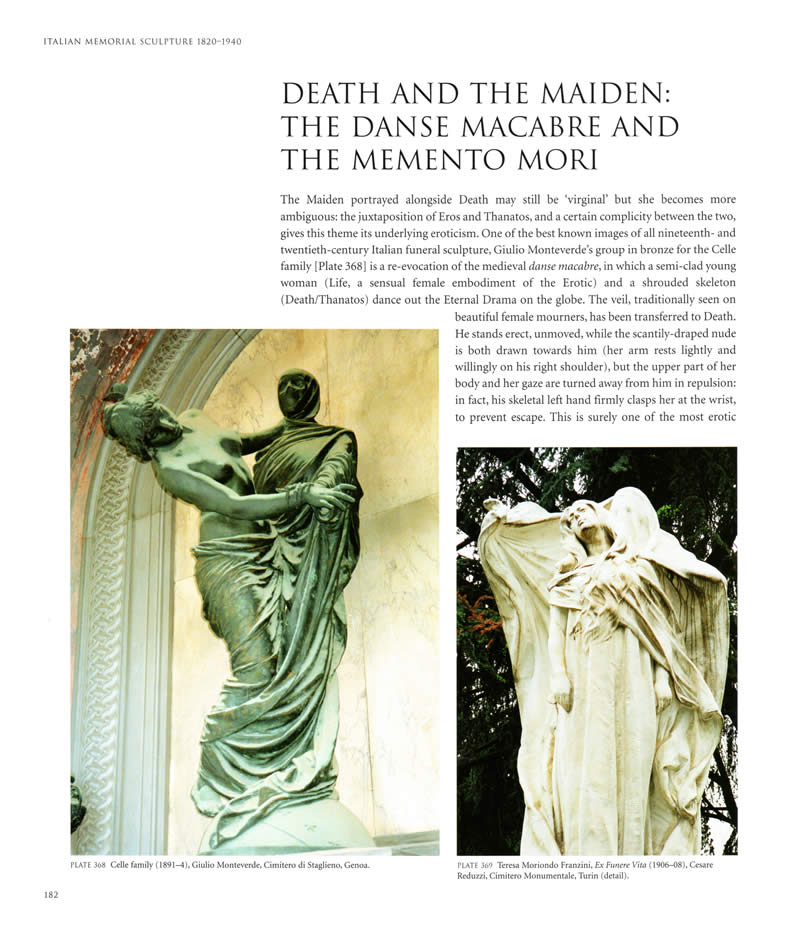Italian Memorial Sculpture 1820-1940

Robert W Fichter and Robert Freidus
London: Frances Lincoln, 2004
ISBN: 0-7112-2384-X (hbk)
pp.10-21.
A sumptuously produced and superbly illustrated record of the wonders of the Italian cemetery, magnificently photographed by Robert W. Fichter and Robert Freidus, this book contains an introductory essay entitled ‘A Short History of the Cemetery Movement in Europe’ by Curl charting the radical changes in attitudes to death and disposal of the dead which made the creation of the 19th-centrury necropolis possible, with its often splendid architecture and stunning sculpture. Together with other contributions by Fred S. Licht, Francesca Bregoli, Franco Sborgi, and, not least, Sandra Berresford, this magnificent, lavish, unusual, and scholarly publication is a glorious record of some phenomenal places not widely known to Anglophone travellers.
Reviews
'Curl’s essay… provides the larger cultural context: his text is especially engaging on the literary parallels, notably the phenomenon of Youngism, which encouraged solitary rambles and purposefully melancholy thoughts. He subtitles this “The Growth of Tenderness”. Through the popularity of Edward Young’s Night Thoughts (1742-50) into the next century, particularly in its German translation, the notion of burial in gardens resonated with a generation of Young Romantic artists just as the wave of new public cemeteries became a hygienic necessity… Italian Memorial Sculpture… gives important reconsideration to the Italian funerary movement as a major contribution to our visual cultural heritage…'
'The first book on the subject in English… the photographs will no doubt prove important in the long run. James Stevens Curl… points out [that] Calcutta acquired a cemetery “far grander than anything seen in Europe since Roman times” nearly forty years before the laying out of Père-Lachaise cemetery in Paris.'
'It is a very rare thing for a hardened critic to gasp with astonishment as he turns every page of a new book… It’s terrific.'
'... an exquisite book, the first on this subject in English, and the most comprehensive in any language, includes essays by distinguished scholars, notably James Stevens Curl and Fred Licht: nearly 500 coloured plates; and a gazetteer of 57 cemeteries.'
'Without doubt, the most scholarly book on the subject to date… A book of great value.'
'A beautifully illustrated study. The texts emphasise both the importance of these monuments in the history of sculpture and that the artists were not funerary specialists but serious sculptors in their own right.'
'Particularly welcome: nothing like it exists, certainly not in the English language, and in Italian there is no publication covering so wide a geographical range and historical period. The book has an impressive introduction by Professor James Stevens Curl, which gives the European historical and cultural/literary context…'




 LinkedIn
LinkedIn  Wikipedia
Wikipedia